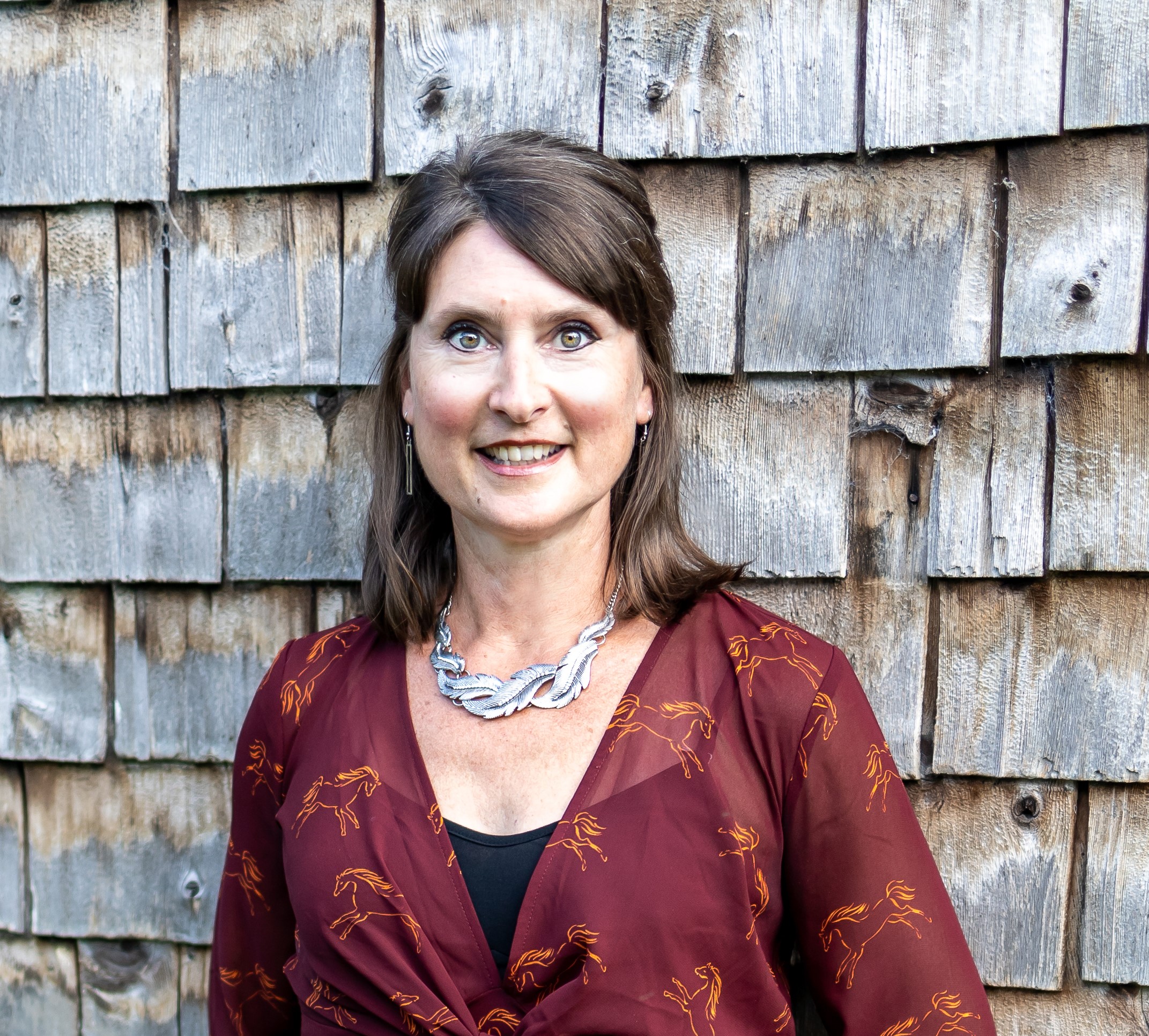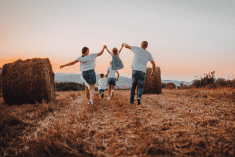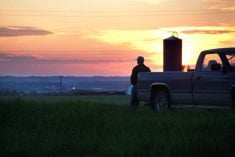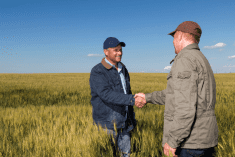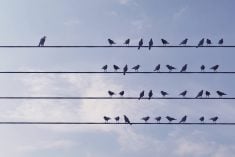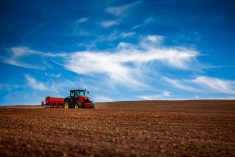This isn’t a typical Country Guide scenario. Three years ago, Karri and Trefor Munn-Venn saw a 25-acre vineyard in Quebec’s picturesque Outaouais region and they bought it lock, stock and barrel — despite having zero farming experience.
For established farmers, it could look as if the Munn-Venns had turned their backs on sensible decision-making the way farmers think of it. There didn’t seem to be any of the rigorous research, the strategic weighting of their options or the calculating of risks. Instead, it seemed like the Munn-Venns made their choice with little more than a shrug and a “menh.”
But behind the speed of their decision lies a solid core, as you quickly learn when talking to them. They’re completely clear on what they’re trying to do and why they’re doing it.
Read Also
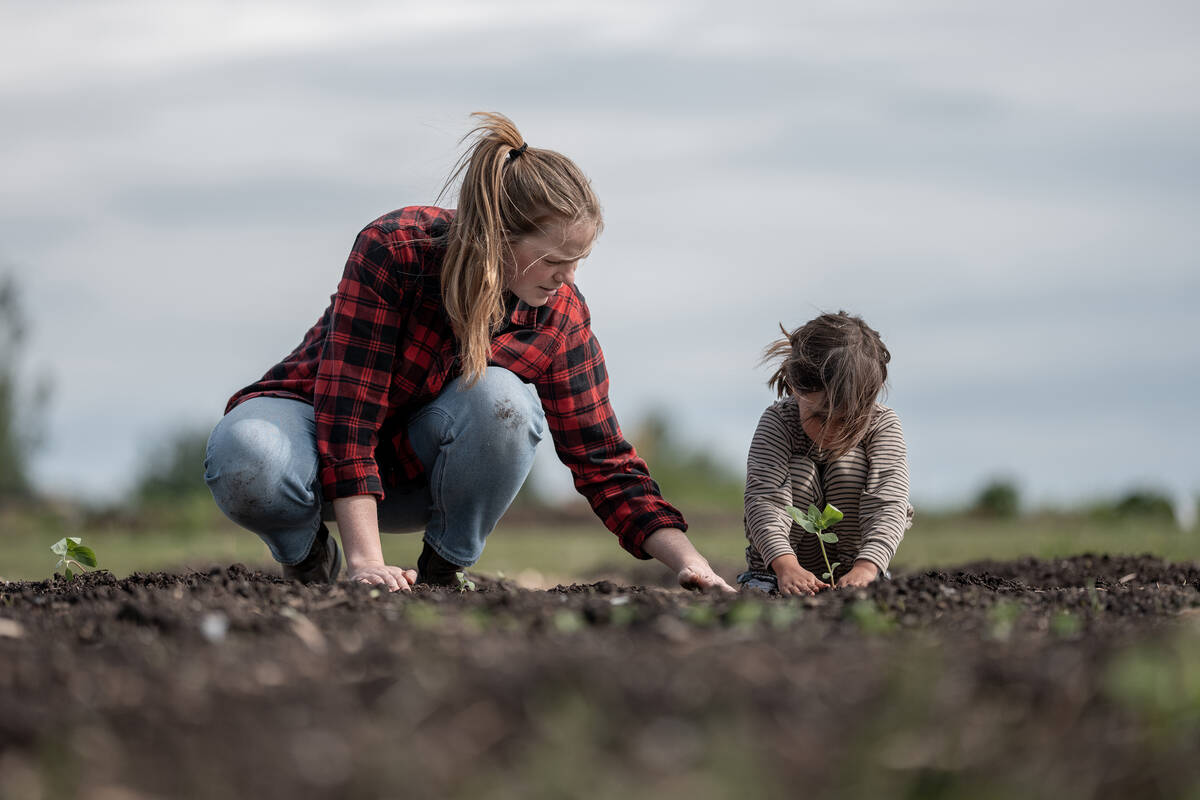
Farm succession: Where to begin?
Recognizing that the process of farm succession is lengthy, involved and requires a solid end goal can help farmers determine where to start.
Is that enough?
The origins of a life-changing decision
Karri and Trefor had grown up in rural villages in southern Ontario and had spent most of their adult careers in major cities. Then came the kind of moment that comes to many couples, when they started to think about what they really wanted to do. “We asked ourselves, is this what our future will look like? Is this what we want?” says Trefor. “So, we started a conversation about the kind of life we wanted to be living.”
First, they had to get clear on non-negotiables like desiring more time outdoors. “And maybe we were also feeling a little nostalgic, hoping to get that hometown feel again,” Trefor explains. “Then, one ugly February day, we were just sitting around in the gloominess, reading. I think we might even have still been in our pajamas. I don’t know what possessed me, but I went on MLS and did a property search with criteria I’d never used before, in a region I’d never set foot in. A bunch of listings popped up and when I clicked on this one rural listing in particular, I told my wife, ‘We’ve got to go look at this right away!’”
An hour later, they knocked on the door and said, “Hi! We’d like to buy some eggs (using the “Eggs for sale” sign at the end of the driveway as their “in”) — and your farm.”
Trefor says the owner laughed, but after a quick word to say the house wasn’t really ready to be shown yet, warmly invited them to explore the farm.
Trefor says, “When we stepped out around the house, the farm opened onto the Gatineau Hills, with the valley dipping out to the river and the vineyard rolling down the side of the hill. It was staggering — and we knew in that moment this was the place.”

Karri continues, “We’d had conversations about buying a small place when the kids were grown, which is still a few years away. I always thought it would be fun to have some sheep. I had no idea what I was talking about when I said that, but I love to knit and I was like, well, wool comes from sheep.” Karri laughs. “From a decision-making point of view, it wasn’t as simple as deciding that we’re going to get a farm in western Quebec and move our family to a new province. There was none of that. There was something that compelled Tref to do that search.”
Despite that spur-of-the-moment farm purchase decision, the Munn-Venns are very deliberate about how they make the decisions that grow their business.
They firmly believe the key to decision-making starts with who they are and the fact that they know what they’re trying to accomplish. Since they were very clear on what they wanted their life to be like, every decision they’ve made after buying the farm has had a common thread running through it: alignment.
Karri and Trefor say that alignment is critical to generating any of the outcomes they’re after. “Everything has to flow out of who we are and the life we want to live,” says Trefor. “You can talk about the business of the farm and the business of business, but even that is an expression of the life you want to live. So, ultimately your decision-making needs to be aligned with those values. All of it has to fit together because if you’re problem-solving and things are not aligned, you don’t have nearly as much (insight) to bring to the challenge.”
This alignment percolates through other layers of the decision-making process as well. “We have more clarity around the answers to questions we’re asking or that are being prompted or even that are being imposed. Sometimes that clarity and alignment even helps us realize that it’s not our question to answer or maybe that we need to explore the question and determine what is being asked of us,” says Trefor.
“Fundamentally, whether it’s the farm, vineyard or the animals, it’s about the things we want less of in our lives, what we want for our kids and figuring out what we value,” Karri adds.
“Sometimes alignment looks like stepping back and saying, ‘What is this? Does this consider all the options? What do we want more of?’”
Tangible and intangible decision-making tools
The couple purchased the farm in February 2020 and moved there that June. “The pandemic had started in there, so all of a sudden there were five of us and a large dog living in a small house in the city, and we just couldn’t wait to get to the farm to have some literal space,” Karri reminisces.
Those before-the-move months were filled with eager talk about what they wanted out of the experience. “Part of that was about the practicalities of the business,” says Karri. “But ultimately, we realized that everything was centred around the concept of nurture. We wanted this experience to be about nurturing the land, the plants and the animals. It was also really important that it be about nurturing ourselves, one another, our relationship, our kids and the community.”
Karri says that even when consciously running decisions through their filter of alignment, not every decision is completely straightforward. “We don’t know all the time what we’re going to do next. But we always come back to the question of ‘will this nurture?’ Some of it’s about bigger business decisions regarding the acquisition of livestock or what we’re going to do in the vineyard. And sometimes it’s about what products we’re going to use. So, if it’s something synthetic and full of chemicals, then that doesn’t align, and we look for more natural alternatives.”
Because running a farm involves so many decisions and things to do every day, the Munn-Venns find that having that guidepost — i.e. knowing what they value and what they’re trying to build —‚ helps them make decisions fast and also in an informed and concrete way. “It means that we don’t have to re-imagine every single piece all the time,” says Karri. “So, when we get drawn into a whole ‘what about this, what about that?’ conundrum, we can step back and ask, ‘Okay, is it aligned?’ When we run into areas where we’re like, I don’t even know how to think about this, our values actually help us do that.”
“This guidepost, this alignment, also helps us make decisions around financial sustainability,” Trefor notes. “In addition to practical, daily decisions about the soil, crops and livestock, we have to look at how we’re going to organize the structure of the business, so that we can build it to fully express its capacity. It’s interesting because the logic part — all the cognitive brain stuff — is absolutely critical, but there are belief systems playing out all the time for us as well. When we get beyond the logic piece, we get into the beliefs of what we think is true, or can be true, about this place. And one thing we believe is that this land has everything it needs to sustain itself in the healthiest way possible.”
In addition to their philosophical alignment approach, the couple has implemented a tangible planning tool. They draw a circle and write the dates of things that must happen inside the circle. “These are things that are important and critical to us as a family and for the farm,” says Trefor.
For example, they include celebrating the day they came to the farm and a few seasonal activities around harvesting, shearing and lambing. On the outside of the circle, they itemize more outward facing (public) events, because they love to share the farm and what they do.
“The reason we chose to represent these activities in a circle is because the inside is more important than the outside,” says Trefor. “So, if we’ve got to make a decision about where something has to give, it’s the stuff on the outside of the circle. The inside is non-negotiable, the activities and events that nurture us as individuals and sustain us as a family. Those are also things that are going to care for our livestock and plants. Then, we work our way from the inside out.”
Information that drives decisions
Since they’re new to the farm game, the Munn-Venns approach information gathering in a similar manner as their overall business approach: being open to ideas.
Karri says that when she was younger, she was sometimes a little too proud to ask for help or to admit that she didn’t know something. “Now I have no problem saying, ‘Hey, I’m brand new at this. Can you help me figure out where to get started?’ Or I’ll ask that person if I can come back to them when I know a bit more and have more nuanced questions.” She has a couple of shepherding mentors who she reaches out to regularly and relies on other trusted sources, like neighbours and friends in similar or other farm businesses, advisors and bankers. “We know that we can find a million opinions about anything we’re trying to do, but since we had never interacted with sheep beyond chin scratches at a fibre festival, these trusted and knowledgeable sources are really important.”
Within the first year, Karri had set up professional development visits to periodically spend a day or so with other regional sheep farmers since “early on I didn’t even know exactly what questions to ask because I didn’t know what I didn’t know,” she says. Trefor has been working on creating an association of local growers to share best practices.
To complement these peer mentoring opportunities, the couple has gone back to school for a vineyard management program and beekeeping courses among others, and they read extensively. In terms of gathering reliable information, Trefor says that it’s gotten a lot harder to find. “Of course, that’s not specific to us or to farming,” he notes. “We have access to so much information, but it’s less about access than it is about opinions masquerading as information.”
It also turns out that it’s less about the practice or technique that a trusted source is suggesting than it is about the principle first. Trefor offers the example of the vineyard’s rolling topography and clay soil. “Normally you want to eliminate as much competing plant life underneath the vines as possible so that the nutrients in the soil, especially in clay soil which is not rich, can provide more nutrition to the vines,” Trefor explains. “So, everyone is telling us that we’ve got to get rid of the undergrowth, but we’re like ‘not a chance!’, because the risk of soil erosion is so high with fine clay on a hill. We’re actually trying to introduce more grass and leave it longer so that there are more roots to hold more water.”
To keep grass short, the sheep are turned out to graze the vineyard. And since the Munn-Venns focus on sustainable, regenerative practices, they’ve opted to use copper to help fight pests — but copper is toxic to sheep. Through her research, Karri found the answer: Southland Baby Doll sheep. “They’re a miniature breed so they like to feed head down, meaning they don’t lift their head up to eat the grapes and leaves,” she says. Planting rye among the rows entices them to stay head down as well.

“There are always trade-offs, these ‘tensions’ that we have to work our way through,” says Trefor. “The lesson for us has been to take the principles that people are sharing with us and figure out what’s the best way to apply the principle rather than the practice. Something that we have been very good at — and which I think is key — is that we constantly reflect on whether something is going right.”
He suggests processing the emotional load — the frustration and loss regarding “bad” decisions — together with reflecting on what’s working and what’s not, and what are some other ways the issue can be approached.
“There needs to be a willingness to be vulnerable and say, ‘I think I totally screwed that up. I came at that wrong,’” Trefor says. “We didn’t know much about anything before coming into this business and we’ve accepted that as part of our posture around learning, reflecting and working our way through decisions.”
Scaffolding decisions
Keeping with the theme of alignment, their recent decision to purchase a wool pellet mill was made to turn waste into something that could nurture. Wool pellets are made with wool that’s too short or too dirty to turn into yarn and ends up in the garbage. The pellets are used as a garden amendment to boost soil health.
“We discovered that most of the sheep raised in western Quebec and eastern Ontario are for meat and that their fleeces get thrown away. My little wool-loving heart was not okay with that,” laughs Karri. “With the mill we’re able to take something that was a problem for other farmers (and our discards) and turn it into something that feeds the soil, that’s climate beneficial because it takes biomass from the region and puts it back into the region. At the same time, it serves the sustainability of our farm operation because not only do we have the sustainability aspect, but we’ve got repeatability as well. It’s profitable and it’s scaleable.”
Making decisions by looking at conventional products and practices in unconventional ways has also helped their 25-acre farm increase yield.
“Any crop is typically always about yield, but when I say to people that I’m not sure the question for us is about yield they reply with ‘I’m not sure he understands what we mean by yield’,” Trefor laughs. “I understand the definition of yield, but I’m not looking for a typical five per cent increase. I’m not sure that’s the right question for us.”

So, what is the right question? Trefor says he’s not always sure at first, but there’s never a doubt that they’ll figure it out. “We’ve found that a more useful question for us is ‘how do we express the full value of a row of vines’, which is a different question from ‘how do I get five or 10 per cent yield increase.’”
Case in point: a while back Trefor was concerned about their payroll expense. “I joked with Karri that people should pay us to work the vineyard. I got stuck on that idea and the question became ‘why don’t we offer people to rent a row as their personal vineyard for the season, and we’ll teach them how to take care of it?’”
This resulted in three times as much value per row, which translated to a 300 per cent profit increase instead of a five per cent increase in yield. “And since most people are out here just for the experience and don’t really care about the grapes, we still had the grapes, so now I’ve got a 400 per cent increase. And because the level of care per row goes up when people are obsessing over their one row, yield went up about 10 per cent.”
Trefor and Karri don’t tend to get caught up in the “analysis paralysis” that can sometimes stymy decision-making because they’re not afraid to fail. They both agree that they’ve done some things that haven’t worked the way they wanted, but it’s provided the clarity to put them on the path they know they want to follow.
“I think that clarity and alignment have led us (to) make or adjust decisions more rapidly,” Karri says. “We’re okay with trying something, not have it work perfectly, and then adjust. We know we don’t have to get it perfect; we just need to move forward. Paralysis kicks in when you want perfection and it doesn’t exist.”
“We’re going to spend the rest of our lives here,” says Trefor. “So in some ways, we’re in no rush and in other ways we’re super excited and want to make everything happen now.”
– This article was originally published in the January 2024 issue of Country Guide.

